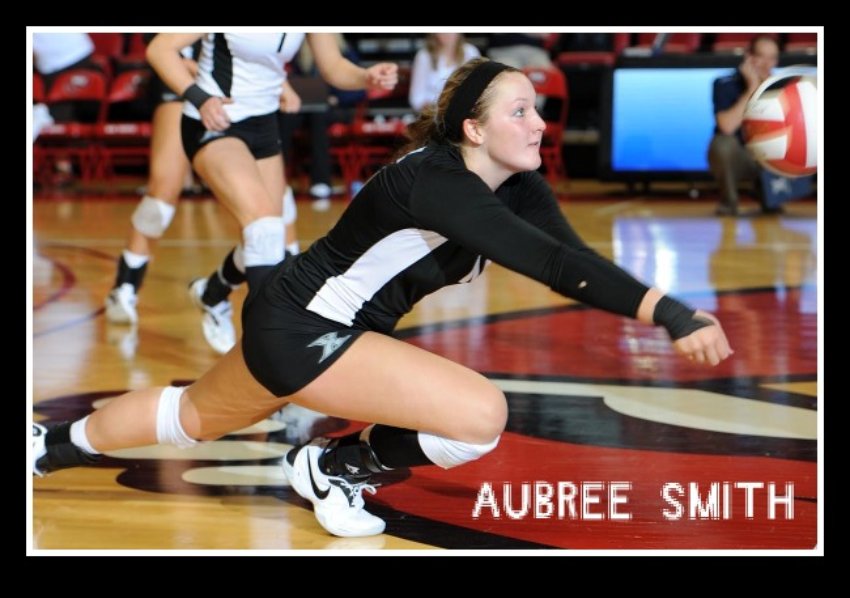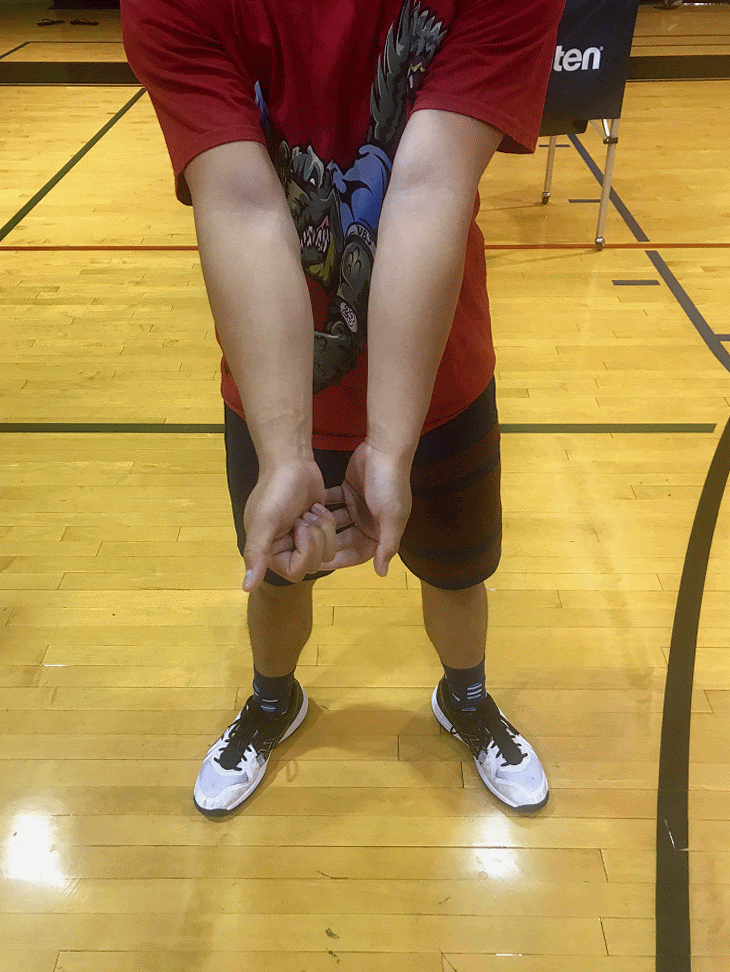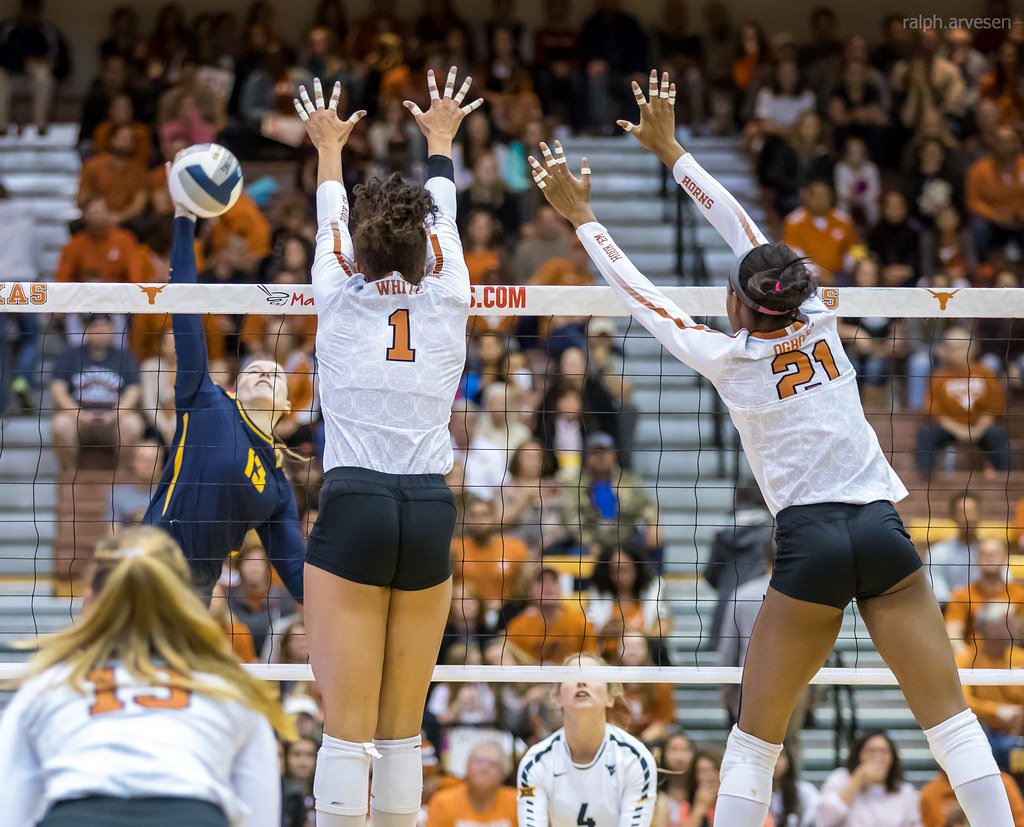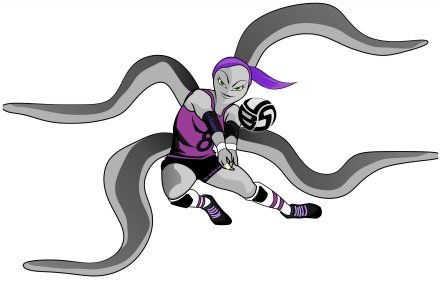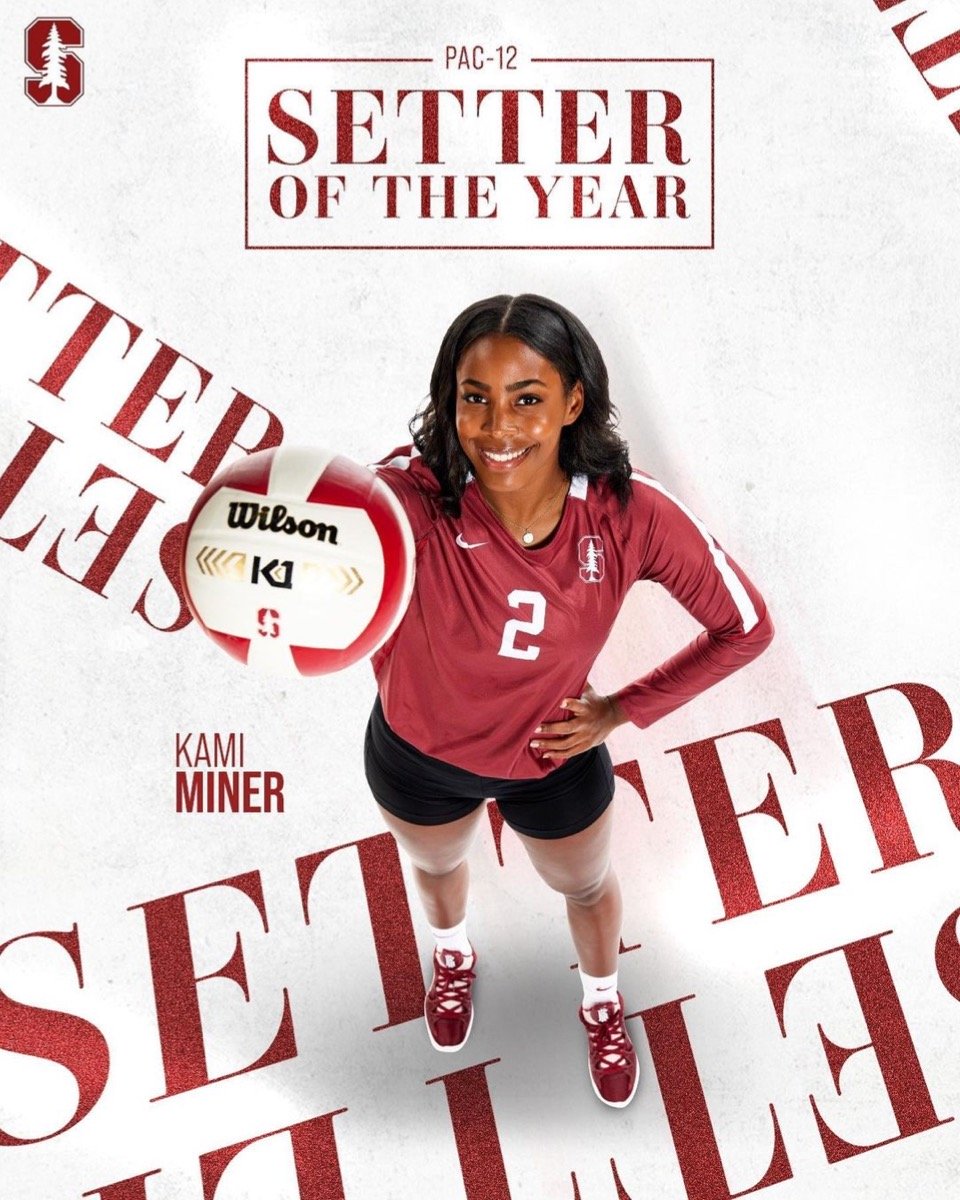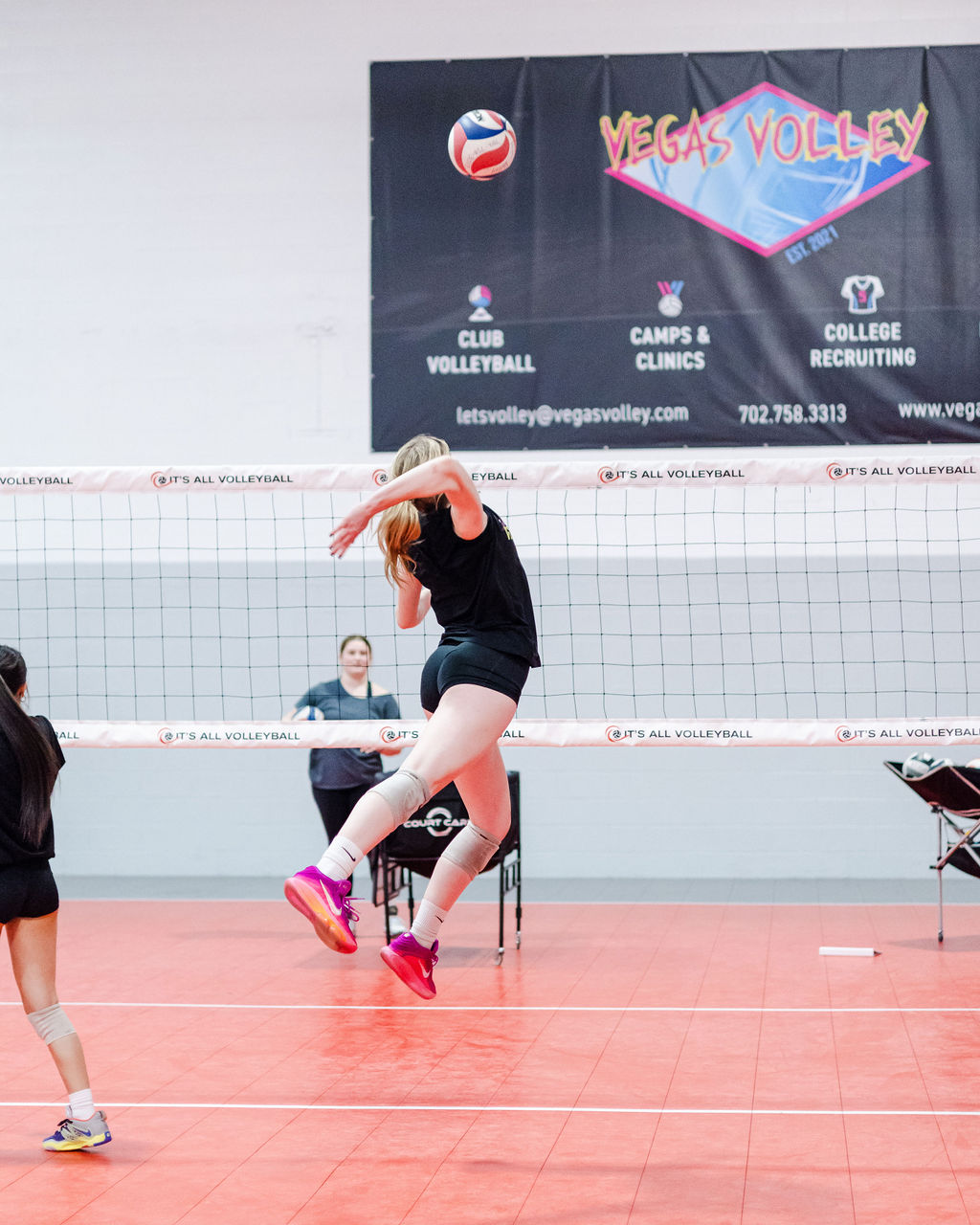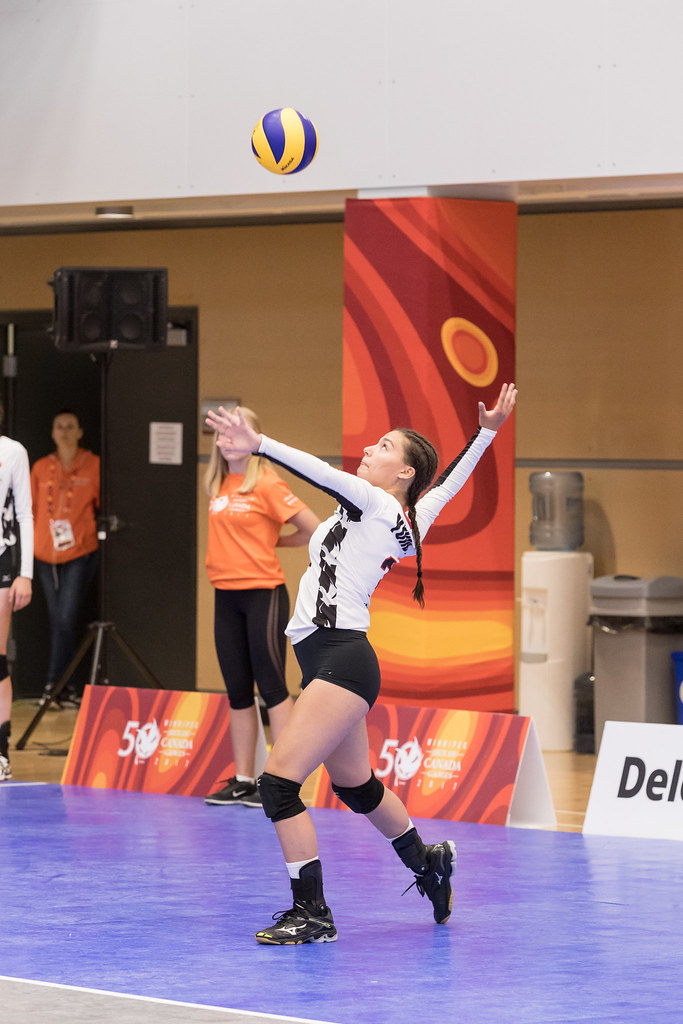- Improve Your Volleyball with Coach April
- Basic Volleyball Skills for Beginners
- The Volleyball Dig
 Dear Volleyball Mom,
Do You Know What Sets My Private Volleyball Training Apart From Anyone In Vegas?
I invite You to read what my private volleyball training mission says before considering hiring me as a private volleyball coach because I'm not available for everyone.
Dear Volleyball Mom,
Do You Know What Sets My Private Volleyball Training Apart From Anyone In Vegas?
I invite You to read what my private volleyball training mission says before considering hiring me as a private volleyball coach because I'm not available for everyone.The Volleyball Dig: What Is It, When To Do It and How To Dig A Ball
The volleyball dig or digging a volleyball up in defense means that you are able to keep an attacked ball by the opposing team off your court floor.
Welcome to the ultimate guide to mastering the art of the volleyball dig!
In the fast-paced game of volleyball, a well-executed dig can be the difference between victory and defeat.
Whether you're a beginner looking to grasp the fundamentals or an experienced player seeking to refine your technique, this comprehensive webpage will equip you with all the knowledge and skills you need to become a proficient digger.
From understanding the significance of the dig in the overall gameplay to step-by-step instructions, tips, and strategies, this guide covers it all.
Get ready to dive into the world of volleyball defense and elevate your game with the volleyball dig.
To dig a volleyball or by digging a volleyball up in defense you are keeping a hard or softly attacked ball by an opposing team's hitter off of your volleyball court floor.
This keeps them from scoring a point, while at the same time you are setting your team up to run an offensive counterattack against them so your team can try to score a point.
How Do You Hold Your Volleyball Hands, Wrists and Arms When You Dig A Ball?
How do you hold your volleyball hands, wrists and arms when you dig a ball?
Both arms are held together at the wrists so your arms form a flat surface, called a "platform" for the ball to bounce off of.
Your Wrists
To keep both wrists held together
- a digger places closed fist inside the palm of the other hand and wraps the fingers around the closed fists so both thumbs are now together side by side.
Your Elbows and Arms
This keeps the elbows and arms straight throughout the entire digging action.
- You contact the ball on your platform above the wrists and below the inside of your elbows.
This area on your arms in volleyball terminology is called your "platform" and its what you use to contact and control balls that are below your waist.
You use your platform to contact the ball when you're
- passing a ball and
- you use it to complete a volleyball dig in defense.
Your Hips
Just before you dig a ball
- you lower your hips so they are below the level
of the oncoming ball and you present your platform in front of you blocking the path of the ball so its deflected up in the air towards the middle of your court close to your team's ten foot line.
Volleyball Dig:
Where Do You Need To Be On The Court In Order To Dig A Volleyball Up?
Where do you position yourself on the court to dig a ball up?
- Depending on the defense that your team is playing this may mean that you stand in the shadow of your blockers or you have to place yourself in the seam of the block so if the hitter hits between the two blockers the digger will pick up that ball in the back court
The Significance of the Dig in Volleyball Gameplay
The volleyball dig is not just an ordinary defensive move; it plays a crucial role in the overall strategy and momentum of the game.
A successful dig can be a game-changer as it prevents the opposing team from scoring and creates an opportunity for your team to transition into an offensive play.
It allows your team to keep the ball off the ground, denying the opposing team an immediate point and extending the rally.
The dig showcases your defensive prowess and resilience, setting the stage for a potential counterattack.
By digging the ball up and maintaining control, you not only save your team a point but also initiate a fluid transition from defense to offense.
A successful dig not only stops the opponent's attempts to score and it demonstrates your ability to read the opponent's attacks and showcases your defensive skills.
A well-placed dig can create opportunities for offensive attacks.
By accurately directing the ball to your setter or other players on your team, you provide them with ample time and space to position themselves for a strong and calculated offensive strike.
The volleyball dig is a pivotal defensive move that not only prevents the opposing team from scoring immediately but also initiates a seamless transition into an offensive play.
Mastering the art of digging can significantly influence the course of the game, as it showcases your defensive capabilities and sets your team up for a successful offensive attack.
Addressing Common Challenges Faced by Diggers in a Volleyball Game
Diggers in volleyball face several challenges when it comes to successfully executing a dig.
These challenges include the speed and accuracy of the incoming attacks.
Here are some tips and possible solutions to help diggers handle these challenges effectively:
1. Challenge: Fast-paced attacks
Solution:
- Anticipation and quick reaction time are key to handling fast-paced attacks.
- Train yourself to read the hitter's body language and anticipate the trajectory of the ball.
- Position yourself accordingly and be prepared to move your feet quickly.
- Stay focused and maintain a low, athletic stance to react swiftly when the ball comes your way.
2. Challenge: Powerful spikes
Solution:
- When facing powerful spikes, it's important to maintain a strong and rigid platform.
- Ensure that your arms are fully extended, creating a solid surface to absorb the impact of the ball.
- By engaging your core muscles and keeping your body stable, you can successfully control the power of the spike and direct the ball to your intended target.
3. Challenge: Variations in attack angles
Solution:
- Hitters often employ different attack angles, such as cross-court shots or line shots.
- To handle these variations effectively, practice positioning yourself to cover multiple areas of the court.
- Train yourself to react quickly to the hitter's body position and adjust your position accordingly.
- By staying balanced and ready to move in any direction, you increase your chances of successfully dig the ball, regardless of the attack angle.
4. Challenge: Erratic or off-speed shots
Solution:
- Some attackers may utilize unpredictable shots, including off-speed shots or tips.
- To handle these shots, it's important to stay focused on the ball at all times.
- Train your eyes to track the ball's movement and adjust your positioning accordingly.
- Maintain good court awareness to quickly identify any subtle changes in the hitter's approach, which can indicate an off-speed shot.
- Stay light on your feet to minimize hesitation in responding to these types of shots.
5. Challenge: Adjusting to different setters
Solution:
- Different teams have varying setter styles, and their sets may have different heights, speeds, and locations.
- To adapt to different setters effectively, communicate with your teammates for valuable insights.
- Observe the tendencies of the opposing team's setters and adjust your positioning accordingly.
- By understanding the setter's preferences, you can anticipate where the ball will be set and position yourself optimally for a successful dig.
Remember, consistent practice is essential to overcome these challenges.
By honing your skills, improving your reaction time, and staying focused, you can effectively handle the speed and accuracy of incoming attacks.
Emphasizing the Importance of Communication for Effective Digger Positioning and Defensive Coordination
Communication is a vital component of successful defensive play in volleyball, particularly between the digger and other defensive players such as blockers and the libero.
Here's why communication is crucial and how it contributes to a well-coordinated defense:
1. Coordinating Blockers and Diggers
Communication allows blockers and diggers to work together seamlessly.
The digger needs to be aware of the blockers' positioning to anticipate any potential gaps in the block and adjust their positioning accordingly.
Clear communication ensures that both the blockers and the digger are on the same page, ready to defend against the opposing team's attacks.
2. Providing Preemptive Information
Effective communication allows the digger to receive preemptive information from teammates.
For instance, the libero or back-row players might have early cues or insights regarding the setter's intentions or hitter tendencies based on the opposing team's patterns.
Sharing this information swiftly and accurately enables the digger to anticipate the direction and speed of the attack, adjusting their positioning accordingly.
3. Alerting for Coverage
Communication from teammates helps the digger be aware of their surroundings.
If the digger must move to retrieve a dig, their teammates can cover the vacated area in the defense.
By alerting the digger of their coverage responsibilities, teammates ensure that there are no defensive gaps and that the court is well-protected.
4. Feedback for Adjustments
Communication also plays a role in providing feedback and making adjustments during the game.
If the digger consistently finds themselves in challenging situations due to the opponent's attacks, sharing that information with the team enables necessary adjustments and strategic shifts to counter the opponent's tactics.
Do You Follow Me on Pinterest?
Follow me on Pinterest Volleybragswag to improve your game even faster!
I share alot of individual, partner and easy-to-do volleyball serving drills we do in class with my followers.
Many of these volleyball practice drills you can do at home by yourself or try at your next practice with your teammates.
If you're a B team or JV player trying to make varsity next year...your goal should be to complete 1000 reps a day of at least three of the basic skills on your own...volleyball passing, serving and setting should be at the top of the list.
How To Play Volleyball:
Where Do You Go Now?
Okay here's where you need to go now! There are three options:
- Learn more about Digging and Defense by clicking the Related Links below. .
- Follow the suggested reading on our Sitemap page Learning How To Play (Sitemap)
- Or visit the pages in the How to Play Volleyball section in the drop down menu at the top of the page to get started.
- Before leaving this page Say "Hi" to Miss O.I Gotchu the Octopus wearing the #8 jersey below. Miss O.I. is the libero for the All Beast VolleyBragSwag All Star team.
- Improve Your Volleyball Performance with Vegas VB Coach April Chapple ›
- Basic Volleyball Skills: Six Essential Skills Varsity Players Know ›
- The Volleyball Dig: What Is It, When To Do It and How To Dig A Ball
SUSCRIBE
To My Email Newsletter Below!
From Lady Vol to Legend: Coach April Produces Powerful Passionate Players...is that you?
What Are You Looking For?

Hi there!
Thanks for stopping by. Hope you learned something today that will help you reach your volleyball goals.
Be sure to subscribe to my email newsletter so you can learn more each week!
Stay strong! Stay motivated!
-Coach April

SUSCRIBE
to my email newsletter below!
Vegas Volleyball's Unsung Heroes: Celebrating Moms with Peace Love Volleyball Shirts
Ready to energize your volleyball mom journey?
Subscribe to my 'Producing Powerful Passionate Peaceful Players' email list above on ImproveYourVolley.com.
You'll receive energy-boosting tips, exclusive insights from me, Coach April Chapple on maintaining momentum in volleyball.
Let's power up the Vegas volleyball scene together!
Recent Articles
-
The Volleyball Pepper Drill: Partner and Three Player Pepper Drills
Apr 19, 25 02:04 PM
The volleyball pepper drill is a ball control drill using setting, digging and hitting skills usually done as a partner or three player person drill in warmup. -
Best Volleyball Drills For Setters, Hitters, Liberos, Passers Blockers
Apr 19, 25 04:08 AM
Best volleyball drills are essential exercises in the learning process for players to improve your serving, hitting, passing, spiking, setting, blocking skills. -
Volleyball Serve Drills Help Improve Your Serving Down The Line
Apr 19, 25 02:35 AM
Use these volleyball serve drills to improve serve difficulty when serving to zone 5 which helps force the Left Side hitter out of their team offensive system.
